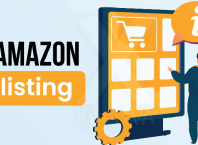In times of uncertainty or market disruptions, customers may make fewer trips to the store and spend even more time than usual shopping online. As a result, businesses will want to ensure they use their marketing spend as effectively as possible. They’ll also want to guarantee their campaign will yield the highest return on investment.
In cases like these, businesses should consider point-of-purchase marketing to round out their advertising strategy.
Contents
What Is Point-of-Purchase Marketing?
Point-of-purchase marketing (sometimes POP marketing, or just POP) is advertising delivered to customers at the point of purchase. The “point of purchase” refers to the area surrounding the point of sale and usually describes an entire store or online storefront. While POP marketing mostly involves advertising in physical stores, the term also refers to marketing in digital storefronts.
In-aisle displays and on-shelf coupon holders are two common physical examples of point-of-purchase marketing. Some newer or more high-tech POP displays include interactive elements, like touch screens or scannable QR codes. These elements can lead a customer to a website with more product information or provide special offers, deals or discounts.
Traditionally, businesses only used POP displays around the point of sale, often in checkout lines. Now, they can be found throughout stores, advertising nearby products and encouraging customers to reconsider items they may have overlooked. These displays can provide serious advantages for businesses that want to boost their revenue with a cost-effective marketing strategy.
Here are six reasons why your business should invest in point-of-purchase marketing:
1People Make Purchase Decisions on the Spot
For the most part, purchases are impulse buys. Depending on a shopper’s mission, they’ll make as many as 82% of their purchase decisions in-store. Even customers who have come to the store for a specific reason and are already filling up their cart will compare products and weigh the value of other purchases.
This factor means that, for most customers, even if they’ve done a significant amount of planning and research before heading to the store, they can still be swayed by the right appeal in the right place. POP displays can influence a customer’s final purchasing decisions or encourage them to pick up another product while they’re at the store.
2POP Advertisements Help Products Stand Out
Every product in an aisle or on a digital storefront has an extremely tiny slice of marketing real estate. Each item has to compete with all the other brands in the same aisle, grabbing a customer’s attention as they skim over what’s available. The range of choice in most stores can easily cause some goods to get lost in the numerous surrounding products.
An eye-catching POP display, like a shelf talker, can bring attention to these items. Some free-standing POP displays can even bring products out of the aisles, giving them a better chance of receiving notice.
3Displays Can Answer Customer Questions
Not every packaged good or item can explain itself right away. Customers may see or be aware of a product, but not have the information they need to justify the final purchase decision. Questions that influence their choices include, “what is this item used for,” “what makes it different” and “why should I buy it.”
A well-placed POP display can provide context and additional info, making customers more aware of a product and demonstrating potential uses or benefits. These displays can answer some of the questions customers may have about a good and potentially resolve their doubts.
4POP Displays Can Improve Customer Experience
A well-placed and well-designed point-of-purchase display can improve customer experience and encourage shoppers to try products they might not have otherwise. This strategy can help you retain current customers, as they’ll appreciate how you experiment with new ideas to keep your brand fresh.
Attractive POP displays can give the store a cohesive look and contribute to your business’s branding and feel. An excellent presentation can add some visual flair to an otherwise standard aisle and shake up someone’s routine.
5POP Marketing Can Be Simple or High-Tech
POP displays don’t have to be complicated, but they can if you want or need them to be.
Traditional POP displays — like posters, coupons and cardboard standees — are not difficult to set up or maintain. Often, manufacturers will even provide or offer some POP marketing material to stores that stock their products. As a result, a business may not have to think about a display’s design or construction.
Smart POP displays — a more recent development — are interactive and encourage customers to engage with their shopping experience. These setups may include features like scannable QR codes, touch screens and other digital elements that reward individuals for investigating a product.
6POP Displays Are Affordable
In general, POP displays won’t require any special targeting. They receive attention from numerous customers in the area where they are located. These displays are also very affordable, meaning they can help out a business’s bottom line.
According to the Harvard Business review, reaching 1,000 customers with POP advertising will cost between three and 37 cents. To market to the same number of consumers with a TV ad, you’d need to spend between $4.05 and $7.75 — and that ad wouldn’t be around for as long as a POP display.
Boosting Your Advertising Strategy With POP Marketing
During times of market instability or reduced demand, getting the most bang for your advertising buck becomes more necessary than ever. Cost-effective marketing strategies, like POP advertising, can provide significant benefits in times like these.
With a fitting POP presentation in place, you can encourage customers to make additional purchases while in-store or consider brands and goods they may not have looked at otherwise. Some displays even reward shoppers for noticing them by offering deals or interactive experiences. An effective arrangement of POP materials can help a store feel more inviting and visually exciting — giving people even more reason to shop or spend a little extra time there.












